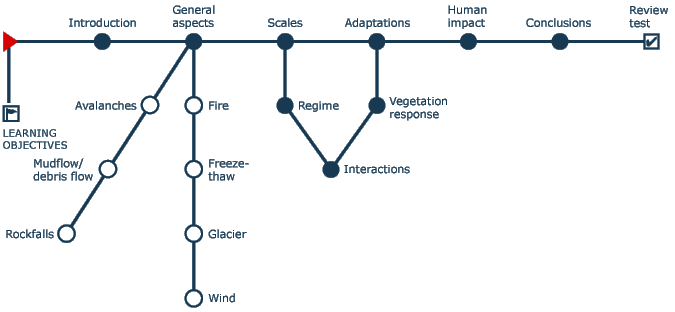| Ecologists are interested in how patterns of disturbance affect the structure and
development of ecological communities. Mountain habitats are particularly unstable due to the wide
range of disturbance processes operating over a range of spatial and temporal scales. These include
small-scale freeze-thaw processes, rock falls, extreme rainfall events, flows of mud and debris,
avalanches and damage by strong winds and fire. The relative importance of these processes varies
widely according to the geographical and topographical situation, producing different disturbance
regimes. These differences have major consequences for the structure and functioning of ecosystems.
The aim of this lesson is to describe how various types of disturbance affect the stability and
biological diversity of alpine ecosystems. In each case we will consider what was the natural regime
of disturbance, and how humans have altered these regimes. We will also consider how plants and
animals are adapted to particular patterns of disturbance. |

